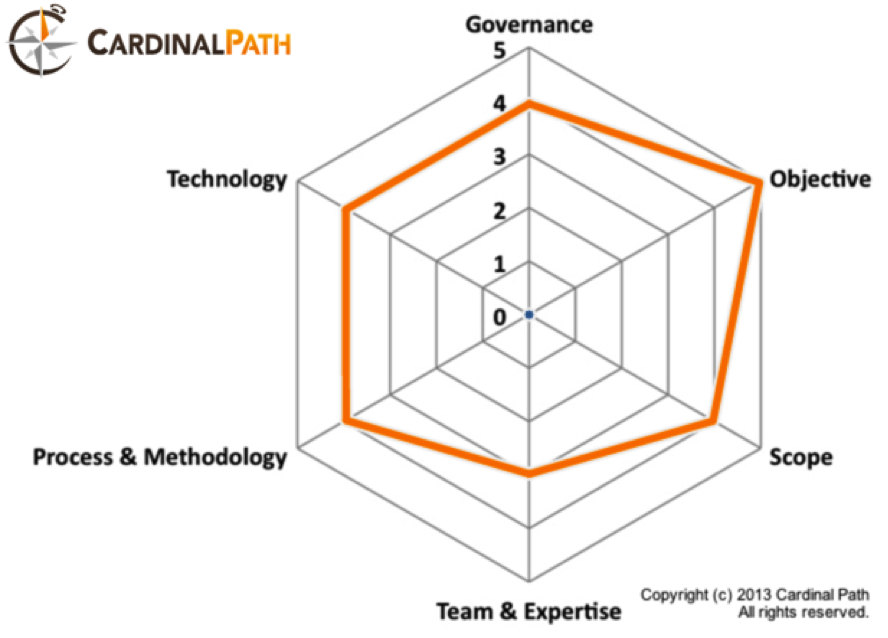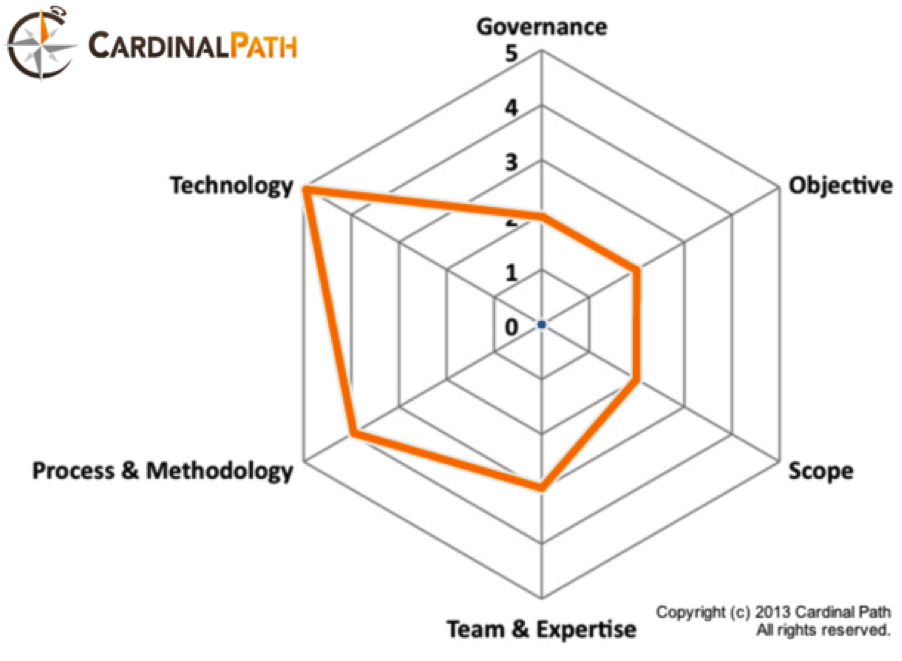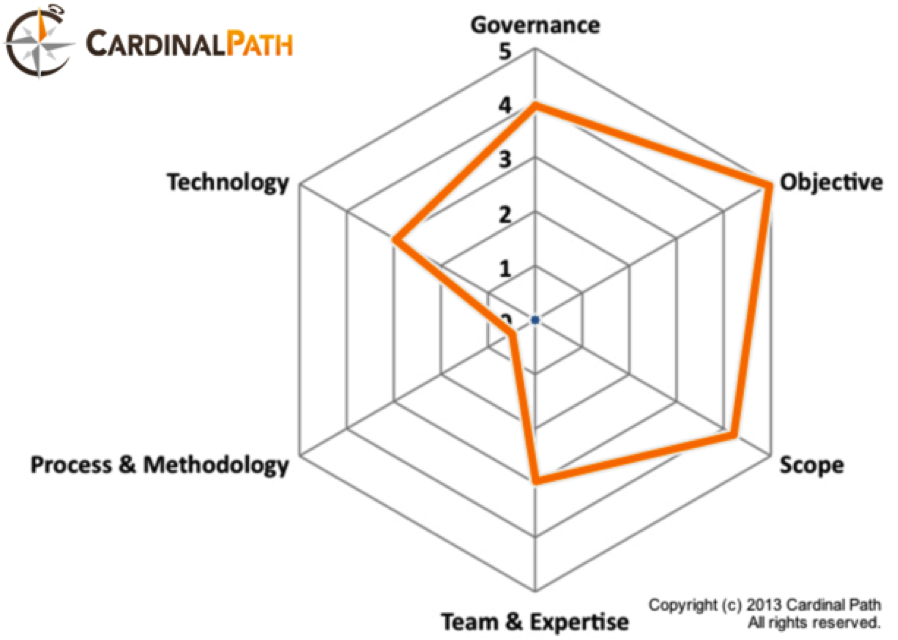Back in 2008 I was happily doing what analysts do: tagging sites, analyzing data and spending a whole lot of time complaining about the lack of buy-in, recommendations going nowhere and how miserable and lonely I was (barely joking!).
A question emerged in my head: Why are so many organizations failing at analytics while a few lucky ones achieve outstanding results? It couldn’t be luck alone, the result of a single “champion” or senior managers who “gets it.” Thus the study of maturity models, frameworks and the birth of the Online Analytics Maturity Model.
Over the years I had the opportunity to engage with countless managers, analysts and business stakeholders from large and small organizations all over the world. There were far many more struggling organizations than ones happily cruising the path of high analytics ROI.
The underpinning concept of the Online Analytics Maturity Model is that six key areas of success need to be addressed and aligned in order to achieve the highest return on analytics at a given maturity level.
One such engagement was for a large entertainment company in Silicon Valley. They gathered all analysts from locations across America and Europe and held a couple of days of workshops and presentations. I was invited to kick-off the first day with an intro to the concepts put forth in the Online Analytics Maturity Model – a great way to think about individual and collective strengths and weaknesses. Those intimate, behind-closed-doors introspections are a great opportunity for a reality check.
One of the highlights of the presentation was explaining how different roles within the organization perceive their analytical capabilities very differently. I shared the result of the online analytics assessment of team leaders and managers (those Accountable), analysts (those Responsible) and some business stakeholders (those Informed).

Figure 1: Results for those who are “Accountable”

Figure 2: Results for those who are “Responsible”

Figure 3: Results for those who are “Informed”
While I offered my own appreciation of their analytical maturity, the most interesting aspect was the huge difference in the perception of their capabilities:
At the unveiling of those results, one manager expressed what everyone was thinking: “We need to talk.” The big “aha!” moment was realizing that the easiest thing to do in order to realign everyone was to establish a clearer plan for change management and improve communication amongst all involved: business stakeholders, managers and analysts.
In the software industry, the lingo “eat your own dog food” is a way of saying “practice what you preach” or use the solution you develop for clients. If they have any hope of providing insight and optimizing the business, analysts should first seek to optimize their own role and responsibilities.
Pinpointing the technology as the culprit for failure is easy. Finger-pointing the lack of skills is common, but as this example demonstrates, change management and communication are by far the most important – and often the most neglected aspects.
Lastly, if you do an online analytics maturity self-assessment remember that this is your perception of analytics capabilities. It is critical to involve other stakeholders in the process or you’ll risk finding out your digital analytics is still going nowhere!
By: Stephane Hamel, Director of Innovation, Cardinal Path
